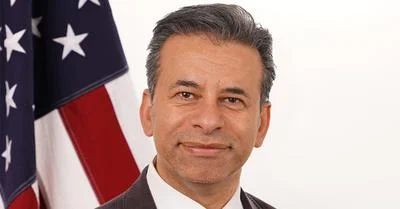Chairman Bob Goodlatte co-sponsored a bill to reauthorize PL 106-393, The Secure Rural Schools and Community Self Determination Act of 2000, introduced Wednesday evening. In 2000, Congress passed the Secure Rural Schools and Community Self Determination Act that focused on creating new cooperative partnerships between citizens in forest counties and federal land managers to develop forest health improvement projects on public lands, simultaneously stimulating job development and community economic stability. The bill, H.R. 517, would reauthorize the Act until 2013.
“PL 106-393 has provided important support to communities trying to develop new opportunities in our national forests while protecting the environment," Goodlatte said. “It provides opportunities to actively work to protect the environment and contribute to the educational opportunities for children in the forest counties. This law has achieved, even surpassed, the goals set forth by Congress. We have the opportunity to continue this mutually beneficial relationship by extending the law; an opportunity we cannot let pass us by."
Between 1891 and 1905, 153 million acres of forestlands were set aside in Forest Reserves and removed from future settlement and economic development. Many counties within or adjacent to the new reserves were significantly impacted by the loss of economic growth and diminished tax base to support essential community infrastructure such as roads and schools.
In 1908, Congress passed a bill that created a revenue sharing mechanism to offset the effects of removing the forestlands from economic development in the affected counties. The 1908 Act specified that 25 percent of all revenues generated from the multiple-use management of the National Forests would be shared with the counties to support public roads and public schools. The revenue-sharing mechanism worked well until the late 1980s, when, due to a variety of reasons, sustained active multiple-use management of the National Forests and revenues declined precipitously.
PL 106-393 has:
• Restored programs for students in rural schools and prevented the closure of numerous isolated rural schools. It has been a primary funding mechanism to provide rural school students with educational opportunities comparable to suburban and urban students. Over 4,400 rural schools receive PL 106-393 Title I Funds.
• Allowed rural county road districts and county road departments to address the severe maintenance backlog. Snow removal has been restored for citizens, tourists, and school buses. Bridges have been upgraded and replaced and culverts that are hazardous to fish passage have been upgraded and replaced. Over 780 rural counties receive funding for roads.
• Over 70 Resource Advisory Committees (RAC's) have been formed. These RAC's cover the largest 150 forest counties. Nationally, RAC stakeholder committees have studied and approved over 2,500 projects on federal forestlands and adjacent public and private lands. These projects have addressed a wide variety of improvements including fuels reduction, habitat improvement, watershed restoration, road maintenance and rehabilitation, reforestation, campground and trail improvement, and noxious weed eradication.
http://democrats-agriculture.house.gov
Source: House Committee on Agriculture









